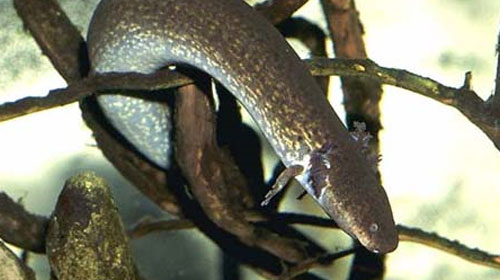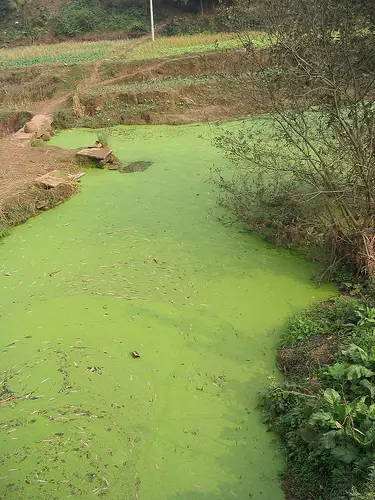Greater siren
The Greater siren is a aquatic salamander with a slender body, bushy gills and no hind limbs. The Greater siren can be found on the south-eastern coastal plains of North America. This large siren is fortunately not classified as endangered and although generally thought of as pretty common there are not current estimations on population.
The Greater siren is completely aquatic can can usually be found at the bottom of swamps, ponds, lakes, streams and literally and body of freshwater no matter how large or small. One thing that the Greater siren does rely on is practical cover, whether that comes in the form of weeds, logs or rocks these types of habitat characteristics are usually preferred however the Greater siren can burrow into mud.
In the absence of practical cover or in drought the Greater siren has a interesting ability in which it will burrow into the mud of the river bed or its current habitat and is able to seal itself in the mud with mucus to retain water until more is provided.

A Greater siren in its water habitat
Greater siren and in fact all sirens retain their larval form throughout their lives and its for this reason that they stay completely aquatic, they do mature however physically they do not change a great deal apart from growing in size. The Greater siren are long and slender with a fin shaped tail and are commonly mistaken for eels at first glance.
As the name implies the Greater siren is the largest of the siren family and can grow to lengths between 50 and 100cm. Although they have no hind limbs the Greater siren do have small forelimbs. One of the main characteristics of the Greater siren is its large external gills and the Greater siren can be told apart from similar species through its size and dark, almost black coloration.

Greater siren on the move
In the natural habitat of the Greater siren there are a variety of dangerous predators such as snakes, alligators and birds however the Greater siren is nocturnal so spends most of they day resting within dense weeds or under rocks and crevices, if any danger was to arise the Greater siren doesn’t have much for protection other than a variety of vocal noises that can be employed to try and intimidate predators which range from croaks, squeals and hisses.
The diet of the Greater siren generally consists of algae and invertebrates however they aren’t overly picky and will sometimes eat fish and smaller amphibians if they are big enough to do so. Breeding occurs throughout February and March and the Greater siren move out into shallow water for this. After successful breeding the female Greater siren can lay up to 500 eggs which she will stick by and guard until they hatch.



I think its more like a catfish, the only difference is the small front feet.
What a great resource!
catfish dont have feet im doing a report on the siren ok i should no!!
also it is endangered check the list! you need to update your article!
Not even threatened…
Siren lacertina (Greater Siren)
Status: Least Concern
Pop. trend: unknown
Source: The IUCN Red List of Threatend Species
Citation: The IUCN Red List of Threatened Species. Version 2014.3.
Downloaded Jaunary 18, 2015